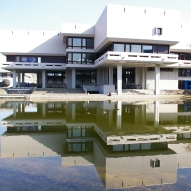Alternative Links zum Volltext:DOI
| Dokumentenart: | Artikel | ||||
|---|---|---|---|---|---|
| Titel eines Journals oder einer Zeitschrift: | Chemical Physics | ||||
| Verlag: | Elsevier | ||||
| Band: | 354 | ||||
| Nummer des Zeitschriftenheftes oder des Kapitels: | 1-3 | ||||
| Seitenbereich: | S. 130-141 | ||||
| Datum: | 2008 | ||||
| Institutionen: | Physik > Institut für Experimentelle und Angewandte Physik > Entpflichtete oder im Ruhestand befindliche Professoren > Arbeitsgruppe Alfons Penzkofer | ||||
| Identifikationsnummer: |
| ||||
| Dewey-Dezimal-Klassifikation: | 500 Naturwissenschaften und Mathematik > 530 Physik | ||||
| Status: | Veröffentlicht | ||||
| Begutachtet: | Ja, diese Version wurde begutachtet | ||||
| An der Universität Regensburg entstanden: | Ja | ||||
| Dokumenten-ID: | 22199 |
Metadaten zuletzt geändert: 17 Feb 2022 10:17
Nur für Besitzer und Autoren: Kontrollseite des Eintrags



 Altmetric
Altmetric Altmetric
Altmetric